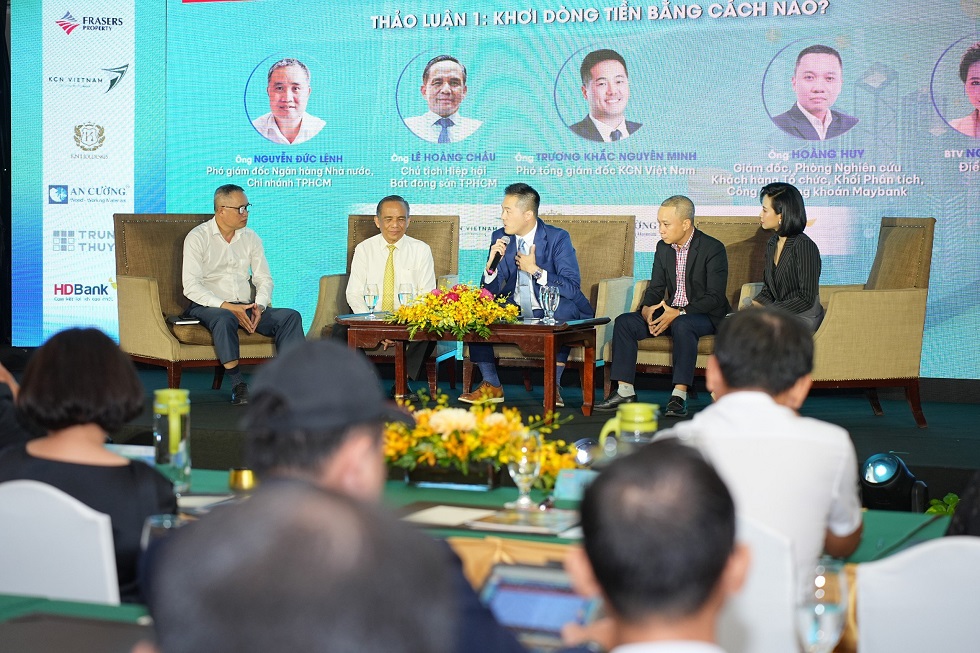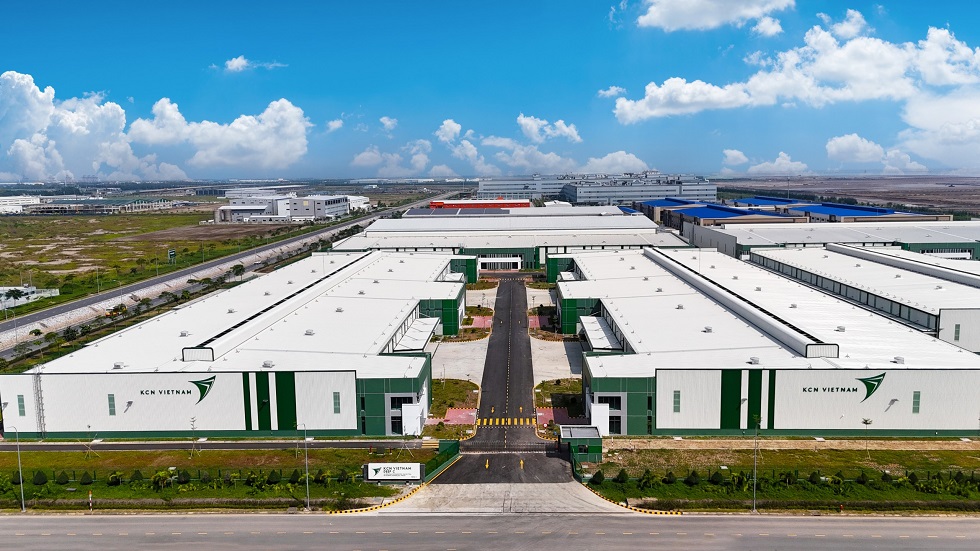As foreign investment continues to flow into Vietnam’s production sector, industrial real estate developers are upgrading infrastructure and services to seize the opportunity.
Capital continues flowing into production
Despite global and local economic uncertainties, foreign direct investment continues flowing into the country amid the rebound of export growth.
Data from the General Statistics Office showed that as of May 20, the total registered foreign investment in Vietnam had reached nearly US$11.07 billion, a 2.0% increase compared to the same period last year. Of this amount, newly registered capital accounted for nearly US$7.94 billion, up by a strong 50.8%. There were 1,227 projects getting investment certificates during this period, a notable rise of 27.5%.
However, it is noted that the amount of registered FDI capital increased significantly month by month, reaching the highest level in May with over US$800 million, which is 2.8 times higher than in April and 3.6 times higher than in January. Meanwhile, the realized capital of FDI projects reached US$8.25 billion in the first five months, rising by 7.8% year-on-year. This indicates economic activities remain positive despite existing challenges.
In Ho Chi Minh City, which accounts for around 27% of the country’s total outstanding loans and 12% of the total FDI capital, the credit flow has shown positive signs, focusing on the industrial real estate segment, according to Nguyen Duc Lenh, deputy director of the State Bank of Vietnam (SBV)’s branch in HCMC, who shared this information at the Finance-Real Estate Forum recently organized by the Saigon Times Group.
Credit growth in this segment reached 9.5%, which is 1.6 points higher than the real estate’s average credit growth. According to Lenh, this showed that despite difficulties, cash flow remains flexible, with credit flowing into sectors that are experiencing good growth.
Also at this forum, Truong Khac Nguyen Minh, deputy general director of KCN Vietnam, stated that the rapid increase in FDI in recent times stems from multiple factors. Besides benefits from the global supply chain diversification, the positive capital flow also results from efforts to create an open, favorable, and reliable investment environment for investors and foreign partners. Another positive aspect is that Vietnam has recently been enhancing its diplomatic relations with strategic partners and major economies.

According to Minh, the growth scenario for capital flows by the end of the year remains positive; however, several other factors need to be monitored. These include the U.S. Fed’s monetary policy, the recovery ability of the Chinese market, and geopolitical tensions and conflicts in various regions. “All these factors can directly impact global supply chains, and Vietnam is a part of that,” Minh emphasized.
Great opportunities for industrial zones
The continued positive FDI inflow into Vietnam also brings opportunities for the industrial real estate segment. The industrial manufacturing and processing sector, which accounts for 66% of registered capital, continues to maintain its leading position in attracting FDI and will remain a primary focus for investment this year. “This is a positive factor driving the growth of focal industrial parks nationwide,” said a report by VPBank Securities.
To enhance FDI attraction, many localities and industrial real estate developers have been actively increasing land reserves, implementing numerous projects, improving the investment and business environment and utilities to boost competitiveness. These activities, which have been taking place for several years, have helped Vietnam maintain a comparative advantage over other countries in the region, especially in the context of the China Plus One strategy.
On the macroeconomic level, favorable conditions also stem from government policies, according to Minh. For instance, Government Resolution 02/2024 on improving the business environment and enhancing competitiveness, as well as the earlier-than-expected enforcement of the Land Law, Housing Law, and Real Estate Business Law contribute significantly to the sustainable acceleration of this sector. Specifically, the industrial real estate sector will also be impacted by Government Decree 35/2022 on “Management of Economic Zones – Industrial Zones.”
“From these policies, KCN Vietnam hopes and believes this positive trend will continue in 2024 and thereafter, thereby driving the development of the industrial real estate market,” Minh said.
Another notable aspect of the industrial zone landscape is the role of large multinational corporations. According to a report released in early June by VinaCapital, a key issue is that multinational companies manufacturing high-tech products are driving up industrial park rental prices, as they are usually less affected by rental costs compared to companies making products with lower added value, such as garments or furniture.
The “gap” in this industrial park market also occurs when large corporations often receive more incentives, while the segment of small and medium-sized enterprises also needs support.
According to Minh, KCN Vietnam considers the segment of small and medium-sized FDI enterprises which are often overlooked as crucial and highly potential customers because serving this group does not require large warehouse spaces, but still needs comprehensive operational support services. “This requires industrial real estate developers to be flexible in providing solutions in products and support services,” Minh highlighted as another challenge in the industry, while also emphasizing that this segment is a key focus for KCN Vietnam alongside large customers.

In the long term, to attract sustainable manufacturing investment into industrial zones, improvements are needed from both regulatory agencies and businesses. The Government needs to continue improving the investment environment, enhancing industry linkages, regional connectivity, and legal frameworks.
In addition to the need for incentive mechanisms and support for industrial real estate investors, addressing administrative procedures and overcoming related difficulties, industrial real estate investors themselves need to continuously upgrade and improve their products and advisory services as well as understand thoroughly the needs of customers and investors.
One of the directions that industrial real estate developers often mention is Decree 35, which provides numerous important guidelines for sustainable trends. Minh cited KCN Vietnam as an example, where the next direction will involve the development of a comprehensive service compound. This aims towards the model of an industrial zone integrated with urban areas and services, becoming an eco-friendly and sustainable industrial zone in accordance with Decree 35.









